At last, the long tail appeared...
...as I have been waiting for him for a few weeks now.
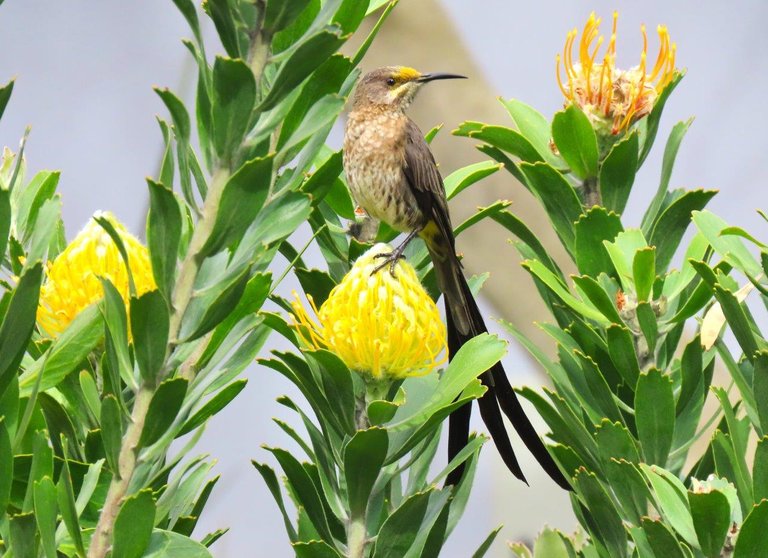
Now how's that for a tail? He is a Cape Sugar Bird (Promerops cafer).
The Cape sugarbird is a grey-brown bird that is easily recognisable by a spot of yellow under its tail and the very long tail feathers present in males. The male is 34–44 cm long, and the shorter-tailed, shorter-billed, and paler breasted female 25–29 cm long. Another characteristic of the Cape sugarbird is the sound it makes when it flies. The main flight feathers are arranged in such a way that when the bird beats its wings, a frrt-frrt sound is made with the intention of attracting females.
He chose to live in this area where the Malachite sunbird is king, and I will show you below how I got him as a youngster.
There he was, as a youngster, forever on guard and peeping around.
Simply because he knows that this is the Malachite's spot. I have also found another Malachite nest with the female on the eggs, and it will not be long before the eggs hatch. Then I hope to get the baby on camera. The Malachite does not hesitate to dive bomb the Cape Sugarbird. But once the Malachite baby is born and it flies, then they will leave the area and it will all be open to the Cape Sugarbird.
Look how he dives down into the pincushion bush when the malachite flies over above him.
He constantly keeps a lookout for the malachite's attacks.
A closeup here of the picture below this one.
Now his job will be to find a female, but thankfully there is still a lot of time left. So, he can sit and dream about a family.
The Cape sugarbird is a specialist nectar feeder when it comes to feeding off Proteaceae. Its long, sharp beak is used to reach the nectar of a variety of species of protea with its long brush-tipped tongue. The staple diet of this sugarbird is nectar; however, it will also eat spiders and insects. The characteristic strong winds in the Cape may make feeding off protea heads difficult, but the Cape sugarbird has adapted to this with the development of sharp claws.
This is not the first time that I post the Cape Sugarbird, as I got him several times before at other places. I even said somewhere that since the protea bushes at the nature reserve was destroyed by fire, the Cape Sugarbirds had to find alternative protea pincushions to feed on. Thankfully, this one selected this area on one of our favorite wine farms. Beautiful birds with their very long tails.
I hope you enjoyed the pictures and the story.
Photos by Zac Smith-All Rights Reserved.
Camera: Canon PowershotSX70HS Bridge camera.
Thank you kindly for supporting this post.
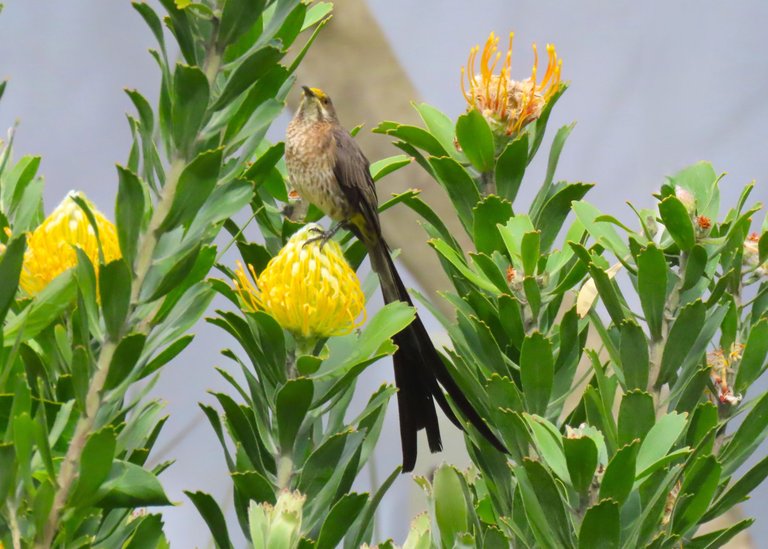
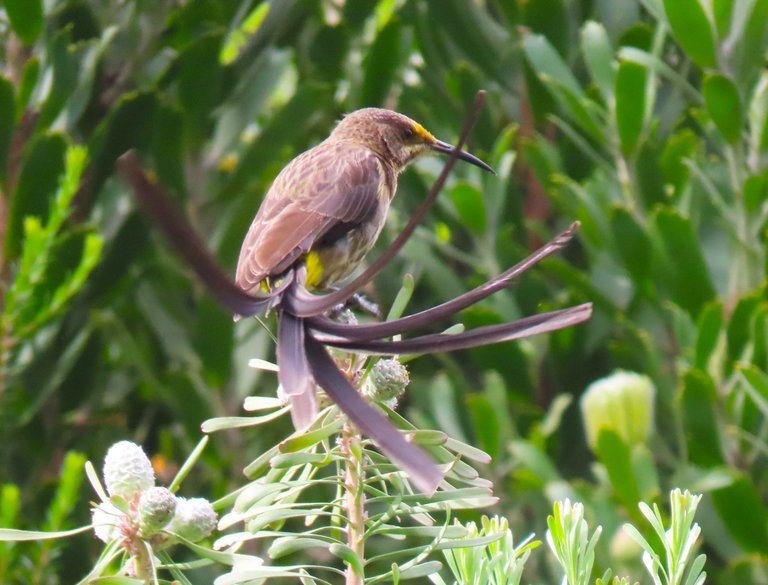
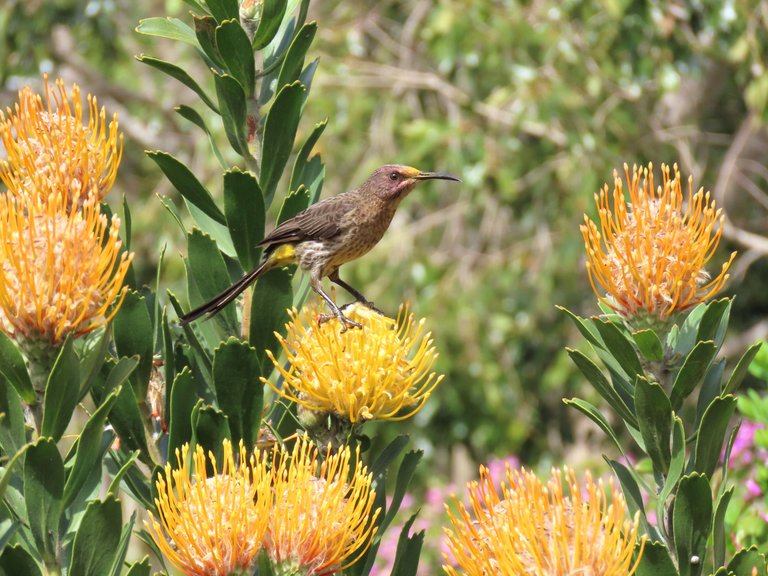
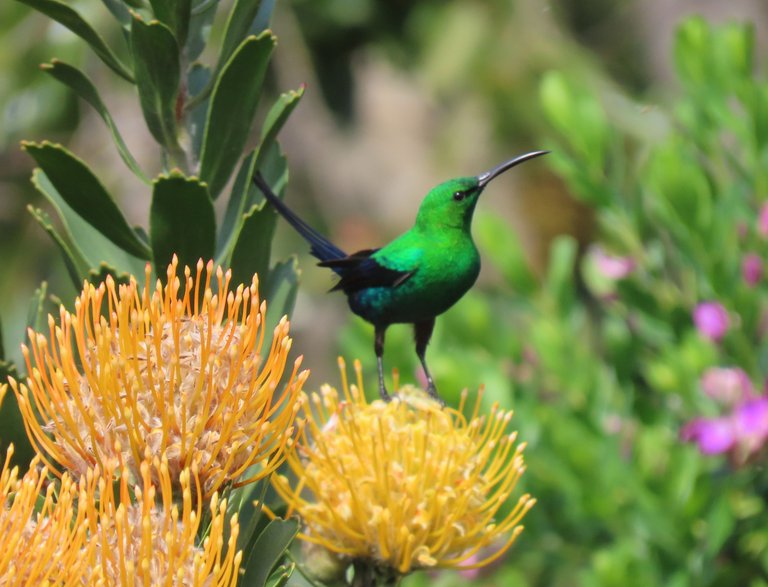
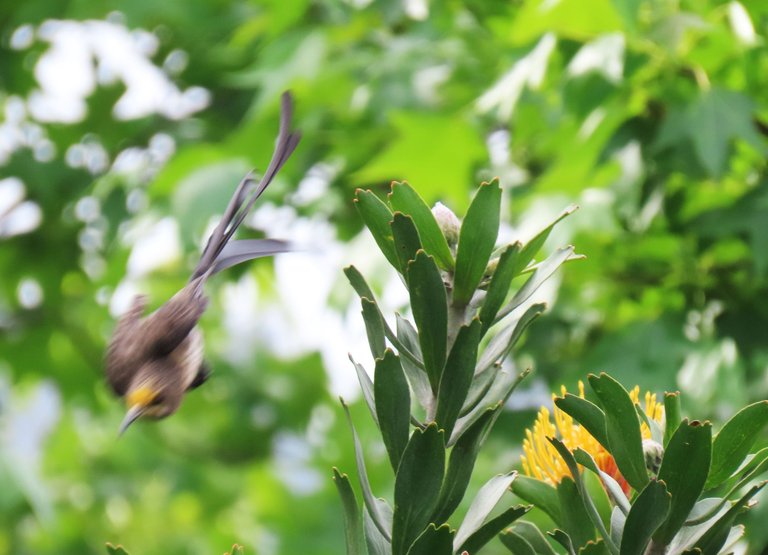
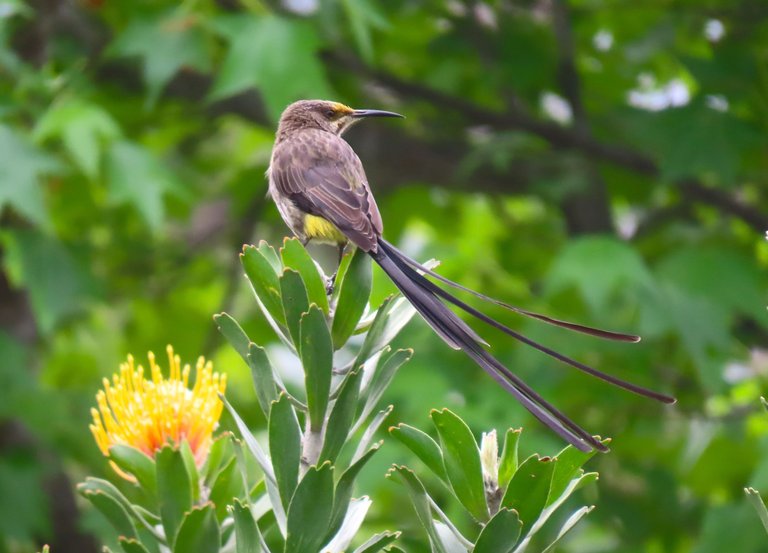
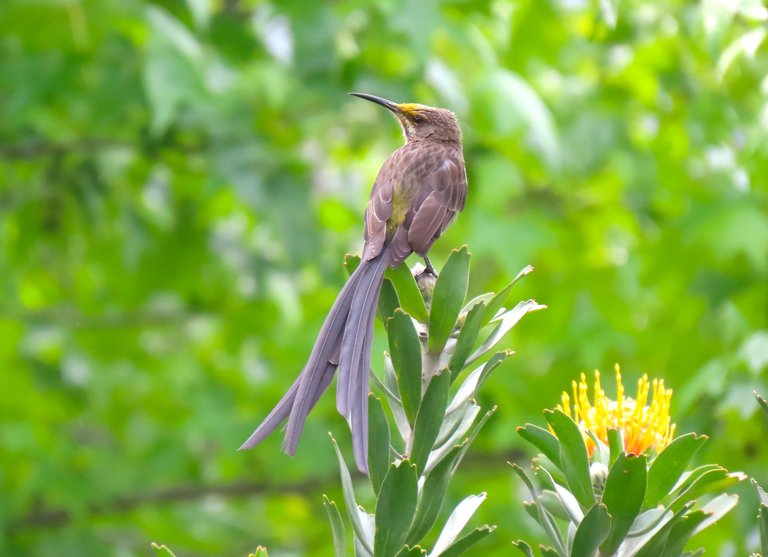
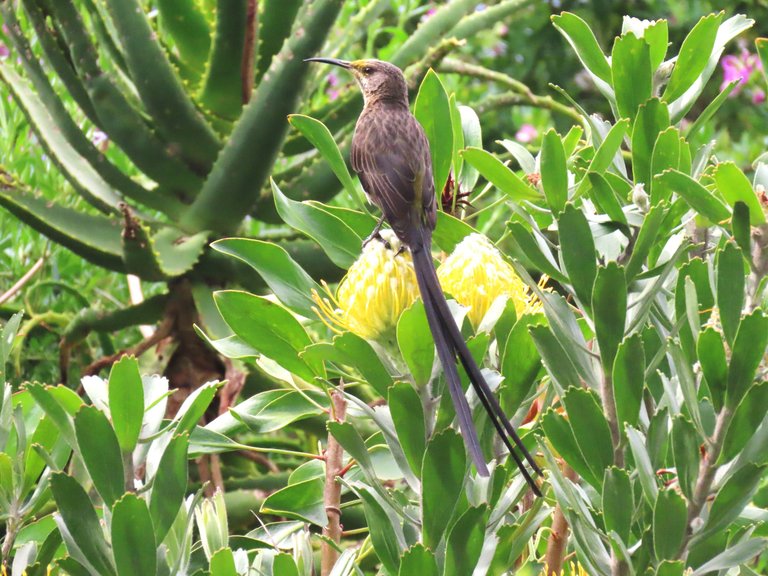
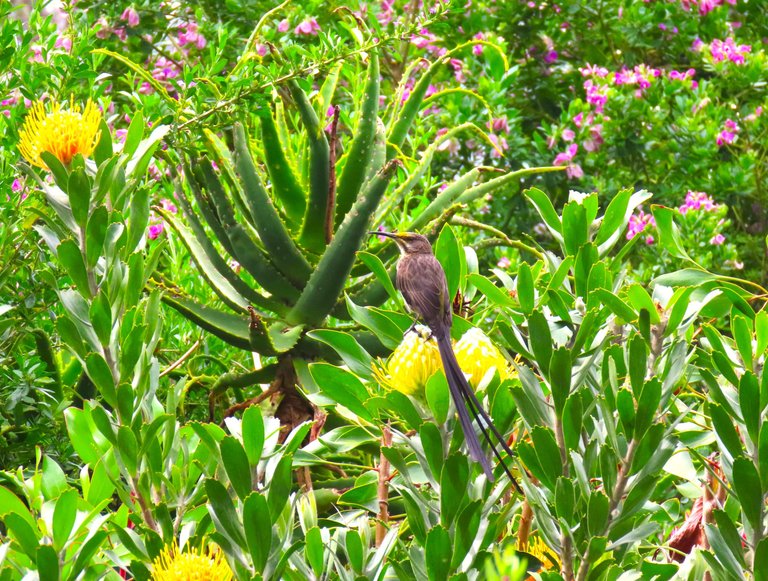
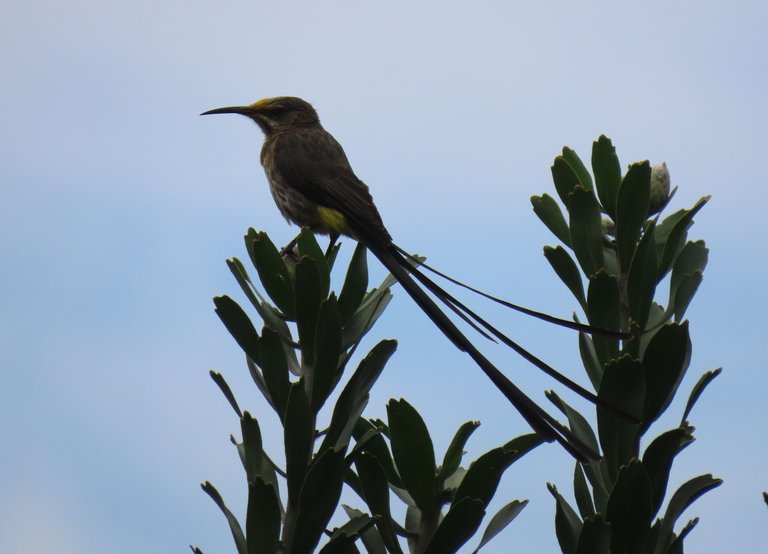
You guys have such amazing birds. So jealous! I really want to visit there and go on some riding expeditions one day!
I enjoyed reading about the bird antics and rivalries, and how they coped with the aftermath of a fire by finding new habitat. Fascinating stuff!
Thank you and the day that you visit you will be welcomed.
Yes, birds can teach us many lessons about survival.
!PIZZA and !LUV
@jayna, @papilloncharity(1/10) sent you LUV. | tools | discord | community | HiveWiki | <>< daily
Lovely birds
Thank you!
It is very happy to see all these natural things. Nature has made each and every thing in a very beautiful way in different colors and these are all the things that make us very happy after seeing them.
I am glad that it makes you happy to see all of the things in nature. The things are nature's way of keeping us happy and it's all free. !LOL
lolztoken.com
A naughty frog.
Credit: fallingforward
@djbravo, I sent you an $LOLZ on behalf of papilloncharity
(2/10)
Wow, it's so beautiful, its tail exceeds its body.
Thank you, and it does indeed have a very long tail. !LOL
lolztoken.com
Not on my watch!
Credit: reddit
@reachdreams, I sent you an $LOLZ on behalf of papilloncharity
(3/10)
NEW: Join LOLZ's Daily Earn and Burn Contest and win $LOLZ
lolztoken.com
Thank you for being an !LOLZ supporter.
Wow, so beautiful bird! I like its long long tail! ❤️
It is said that the clothes maketh the man, and in this case the tail maketh the bird. !LOL
!PIZZA and !LUV
@silviabeneforti, @papilloncharity(2/10) sent you LUV. | tools | discord | community | HiveWiki | <>< daily
lolztoken.com
Whether they like it or not.
Credit: reddit
@silviabeneforti, I sent you an $LOLZ on behalf of papilloncharity
(4/10)
Farm LOLZ tokens when you Delegate Hive or Hive Tokens.
Click to delegate: 10 - 20 - 50 - 100 HP
The bird has a pretty nice tail and I like the long tail that the bird has.
I agree as we also love the bird's tail. !LOL
lolztoken.com
He was stuffed.
Credit: reddit
@mnurhiver, I sent you an $LOLZ on behalf of papilloncharity
(5/10)
$PIZZA slices delivered:
papilloncharity tipped jayna
@papilloncharity(3/15) tipped @silviabeneforti